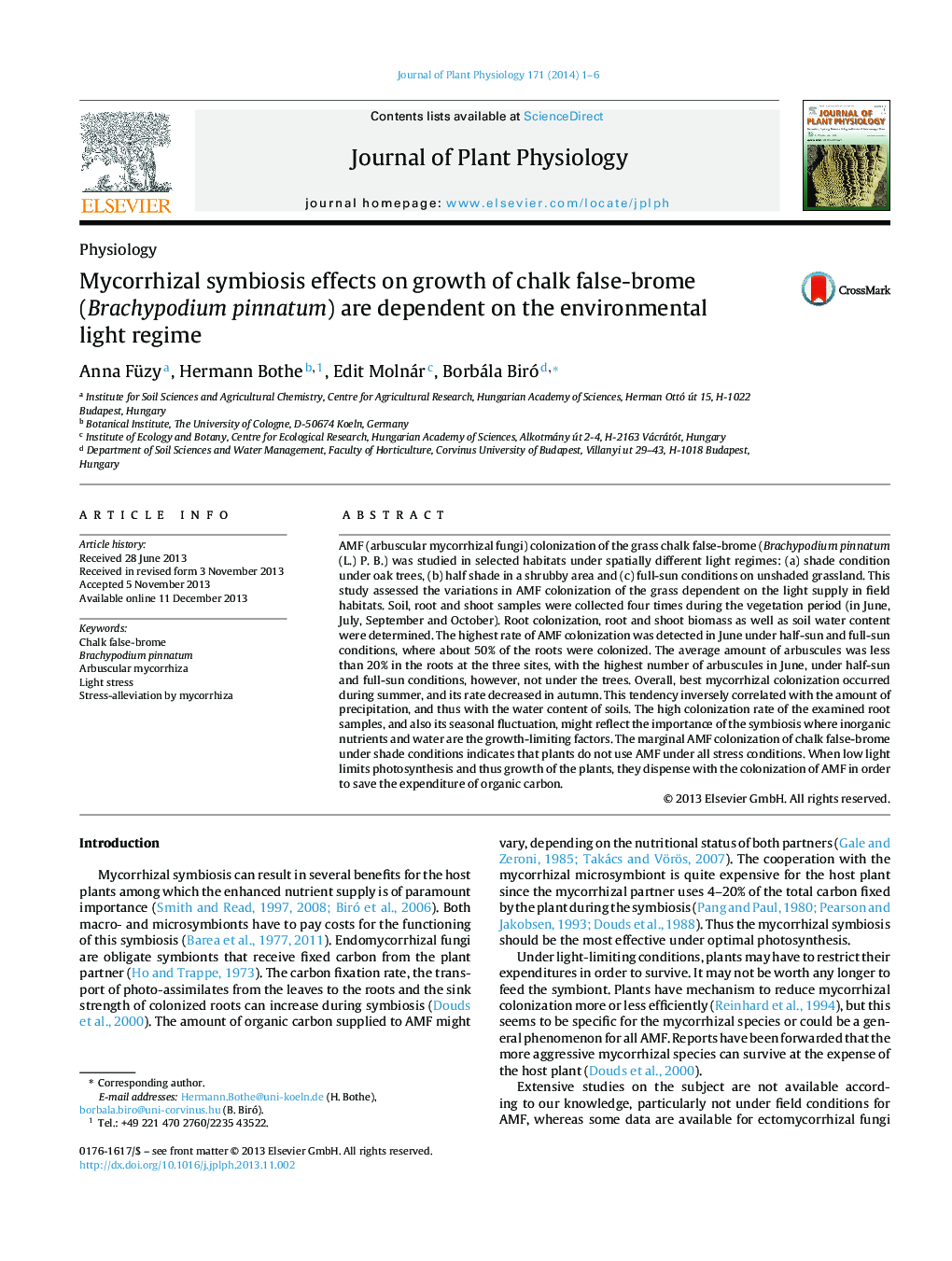| Article ID | Journal | Published Year | Pages | File Type |
|---|---|---|---|---|
| 10876886 | Journal of Plant Physiology | 2014 | 6 Pages |
Abstract
AMF (arbuscular mycorrhizal fungi) colonization of the grass chalk false-brome (Brachypodium pinnatum (L.) P. B.) was studied in selected habitats under spatially different light regimes: (a) shade condition under oak trees, (b) half shade in a shrubby area and (c) full-sun conditions on unshaded grassland. This study assessed the variations in AMF colonization of the grass dependent on the light supply in field habitats. Soil, root and shoot samples were collected four times during the vegetation period (in June, July, September and October). Root colonization, root and shoot biomass as well as soil water content were determined. The highest rate of AMF colonization was detected in June under half-sun and full-sun conditions, where about 50% of the roots were colonized. The average amount of arbuscules was less than 20% in the roots at the three sites, with the highest number of arbuscules in June, under half-sun and full-sun conditions, however, not under the trees. Overall, best mycorrhizal colonization occurred during summer, and its rate decreased in autumn. This tendency inversely correlated with the amount of precipitation, and thus with the water content of soils. The high colonization rate of the examined root samples, and also its seasonal fluctuation, might reflect the importance of the symbiosis where inorganic nutrients and water are the growth-limiting factors. The marginal AMF colonization of chalk false-brome under shade conditions indicates that plants do not use AMF under all stress conditions. When low light limits photosynthesis and thus growth of the plants, they dispense with the colonization of AMF in order to save the expenditure of organic carbon.
Related Topics
Life Sciences
Agricultural and Biological Sciences
Agronomy and Crop Science
Authors
Anna Füzy, Hermann Bothe, Edit Molnár, Borbála Biró,
